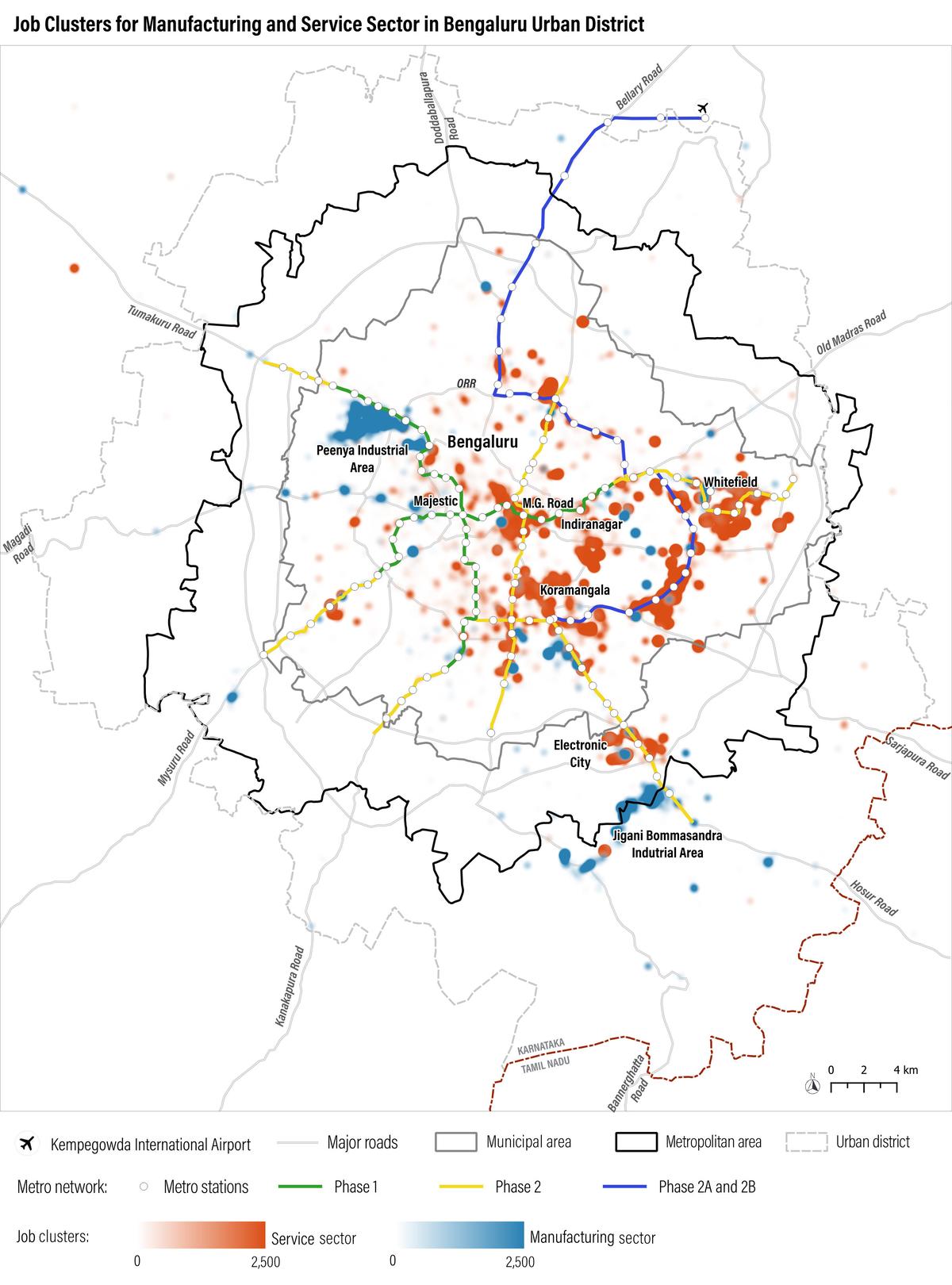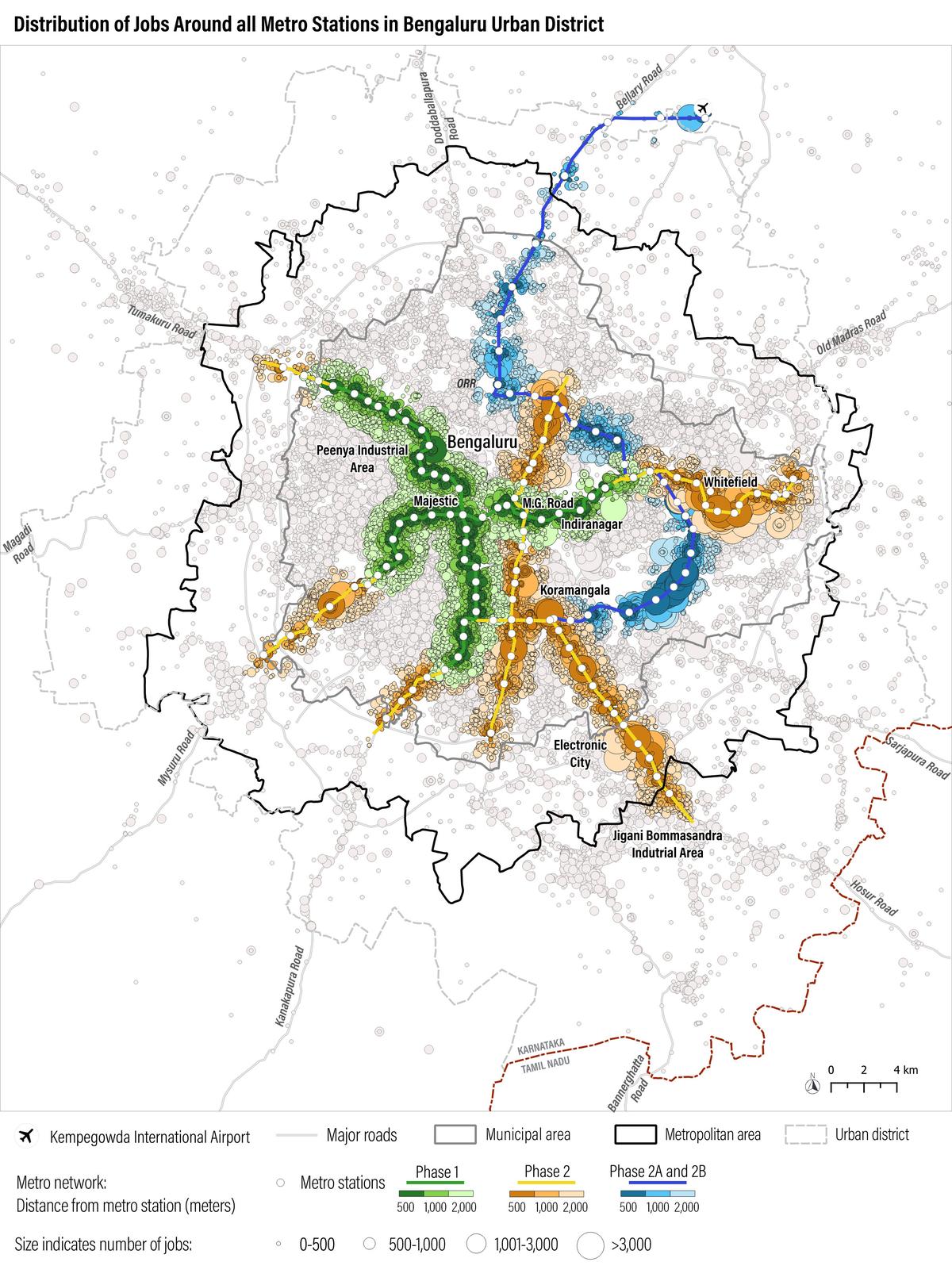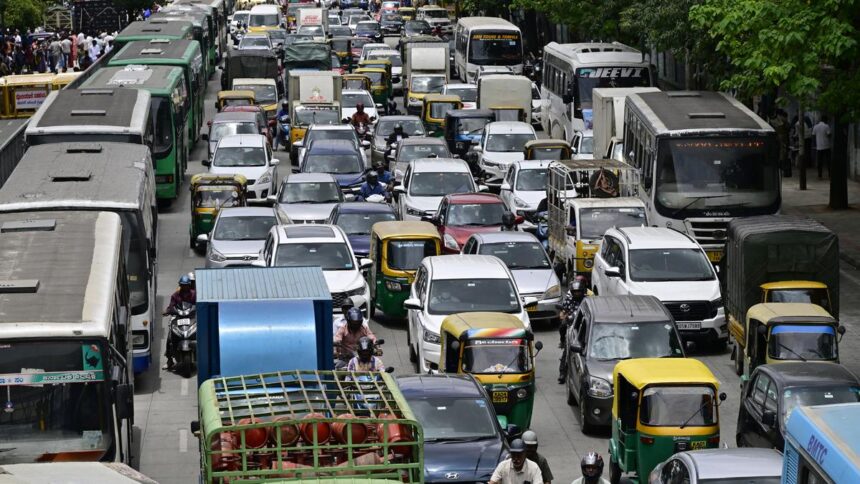meIndian cities are on the brink of a transport revolution, with ₹3 trillion of payments (between 2022–2027) to be made for the approved metro rail project. These investments will not only improve the city’s mobility but also open up a lot of economic potential.
Studies show that investment in public transport can generate thousands of jobs and economic returns 5-7 times greater than the initial cost. To leverage investment in mass transit and maximize economic benefits as well as improve the quality of life in cities, the Government of India approved the National Transit Oriented Development (TOD) Policy and the Metro Rail Policy in 2017, encouraging the adoption of TOD as a key. urban planning and growth management strategies. With this national policy and funding push, 27 Indian cities are building metro rail systems, and many others are building rail and bus-based mass rapid transit systems.
To increase access to projects
Public policy and land market conditions are driving the development of economic centers in suburban and suburban areas, and public transportation systems are struggling to keep up with this outward sprawl. Longer commutes, and congestion and pollution due to greater use of private vehicles, hinder access to employment and the labor market, productivity and livelihoods. Bengaluru, for example, is one of the most congested cities in the world, with a social cost of about ₹38,000 crore per year (5% of the city’s GDP) according to 2018 figures.
See also: DDA gives approval for Transit Oriented Development policy
TOD provides a promising approach to address these challenges, while contributing positively to India’s low-carbon growth ambitions. With the principle of land use-transportation integration, TOD encourages the development of compact, mixed use and sustainable modes of transportation, such as walking, cycling and mass transit, effectively removing density from congestion and economic growth from resource use and carbon emissions. WRI India’s recent publication titled ‘Jobs near metro rail transit in Bengaluru: Enabling an accessible and productive city’ underscores the critical need for integrated spatio-economic planning and bringing jobs closer to transit through TOD, given its significant benefits and co- benefits.
Improving accessibility to jobs, through safe and efficient modes of transportation, can significantly improve productivity and labor force participation. Proximity to workplaces and higher job density make transit passenger ships more effective than residential densities. Clusters of job growth near transit create an agglomeration effect that boosts innovation, productivity, and competitiveness – far more than scattered job growth. In addition to expanding the catchment of workers and customers for businesses, it also stimulates the development of the local economy and real estate, which leads to increased profits for public institutions, which can be reinvested in infrastructure and service upgrades that revitalize the urban environment.
Key findings
The WRI India study examines the spatial distribution of jobs related to registered factories (manufacturing companies) and shops and commercial enterprises (service companies) in the Bengaluru Metropolitan Area (BMA).
The study also evaluates the distance and current job density along the operational and under-construction metro network of the city that is Phase 1, 2, and 2A-2B, and provides insight into location considerations for business and benefits, trade-offs, and markets. or regulatory challenges faced in locations near metro stations.

The paper provides actionable recommendations for job growth near mass transit stations.
The research shows there are approximately 0.2 million companies registered with the BMA, employing nearly 4.6 million workers, with many service companies. In particular, large companies (100+ employees) are only 2% of all companies but account for 60% of all jobs. As it is mostly for the service sector, the average employment density is highest in inner-city areas along the Outer Ring Road (ORR) and decreases further away. The peak employment density is approximately 25,000 jobs/sq. km in large industrial clusters for 58,000 to 1,09,000 jobs / sq. km in hi-tech clusters such as Whitefield and Electronic City.

After the completed metro phase (172 km), 28% of the total projects mapped in the BMA will be within 500 m of the nearest metro station, 59% within 1 km, and 85% within 2 km. But some large project groups remain disconnected, and most of the current projects are beyond a comfortable walking distance (500 m) from the metro station, which emphasizes the need for pedestrian infrastructure, and feeder services, especially at a distance of 1-3 km.
Market relations and the economy of agglomeration push companies of a certain size and type to be close together, with large businesses surrounding small businesses around them, simultaneously reaping the benefits of agglomeration. The study found that service companies, especially those that benefit from better catchment and accessibility for employees and customers, are more likely to locate and cluster near the metro. However, the metro has no influence on the location choice of manufacturing firms. Most blue-collar workers tend to live in the surrounding area and walk, bike, or use public buses or informal transportation to get to work. The study supports the findings of other researches showing that the metro has boosted the development of nearby real estate, especially the growth of service companies.
See also: An outlining of the urban transformation strategy
The main obstacles preventing large businesses from locating near metro stations include a lack of suitable properties, inappropriate development regulations, and inadequate levels of infrastructure.
Developed inner-city areas have limited land availability for large-scale commercial businesses and are packed with buildings that often do not meet the requirements, for example, legal Grade-A buildings. In addition, small plot sizes and other regulations regarding road width access, setbacks, ground coverage and parking norms, hinder (re)development of higher elevations. Also, the process of merging plots involving multiple owners can be difficult, risky and costly.
Higher property prices near metro stations, however, tend to discourage smaller, more established businesses. Market saturation and community resistance to greater commercialization in the station area are also challenges for businesses looking to locate there.
Way forward
A high-functioning global city like Hong-Kong has 57% of jobs within 500 m of a transit station, 84% within 1 km, and 96% within 2 km according to LSE 2013 data. This city has one of the highest levels of transit use ( 90% of trips are motorized) and one of the highest levels of car ownership (56 cars per 1,000 people). This made Gross Value Added per capita increase by 50% between 1993 and 2011, while fuel consumption and carbon emissions per capita decreased by 10%.
In Bengaluru, the upcoming revision of the city’s master plan provides a valuable opportunity to set aspirational targets for transit-adjacent projects and transit network extension strategies to connect existing and emerging clusters of high-density projects.
To maximize resource and economic efficiency, the plan must also identify and prioritize areas served by transit where employment density can be increased through renewal and densification, balancing market demand with environmental and community goals.
See also: India needs smart urbanisation
Public policy can determine location-efficient incentives such as additional development rights or fee/tax subsidies to encourage businesses to locate near transit or in economically depressed areas. Apart from the conventional sources of funding, the government can explore public-private partnerships and take advantage of financing mechanisms that can be ring-fenced to improve the station area. It should also designate a nodal agency to facilitate interaction between various stakeholders and coordinate TOD planning and implementation.
The private sector (businesses, developers, financing institutions) can play an important role in directing commercial and industrial investments, near transit stations.
In addition, proactive partnerships, between the private and public sectors, can enable catalytic development with increased facilities, enhancement of common areas, and providing end-to-end connectivity between workplaces and transit stations.

Transport infrastructure is a major driver of economic activity and developing countries like India will continue to invest in it. In order for our metropolitan cities to become, and remain, globally competitive, governments must prioritize job density near transit in the policy-planning-regulatory framework. This should include public infrastructure upgrades, and coordinated action to shape inclusive, low-carbon, compact and connected growth.
Radha Chanchani is Senior Manager and Jaya Dhindaw is Executive Director with the Sustainable Cities program at WRI India.
Published – 24 September 2024 08:30 IST




